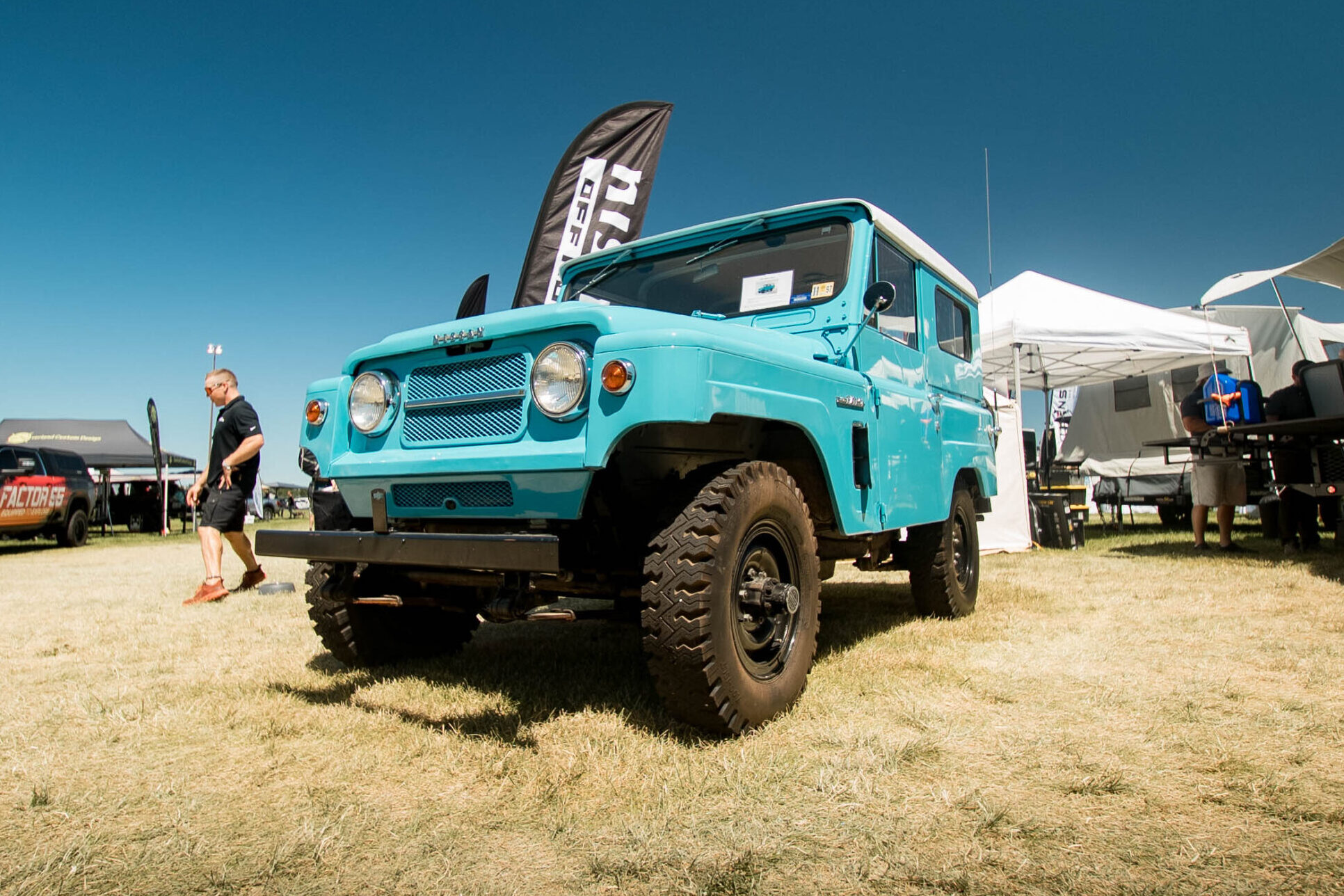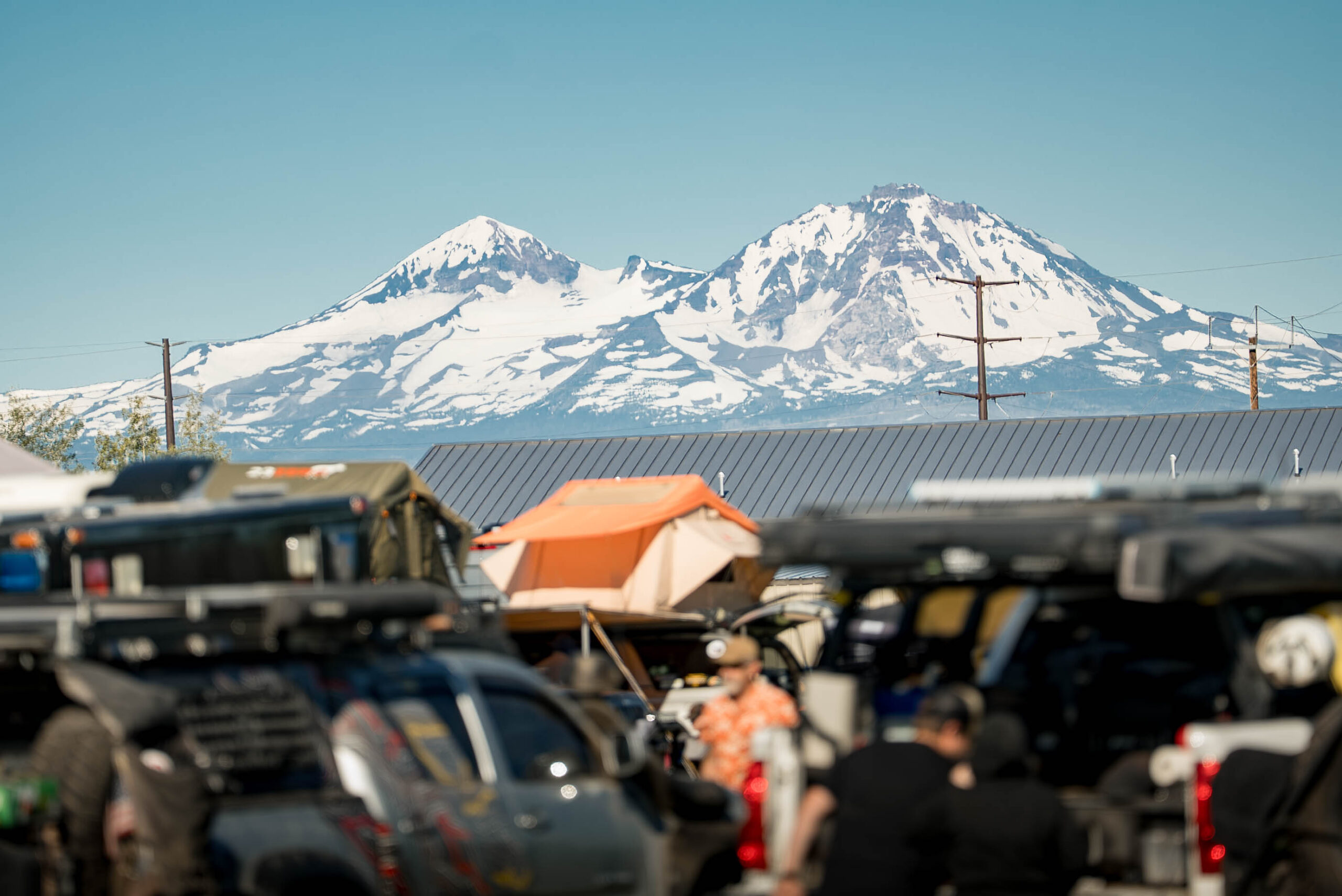Quick Take: The FSR Evolution V2 is a premium rooftop tent that has earned its place in the upper echelon of hardshell RTT options. It’s thoughtful design, high quality construction, and four-season performance make it a stand out in a time when overlanders have such a wide variety of options in the market.
My first experience with a rooftop tent was about 15 years ago in the middle of a truly wretched storm in eastern Arizona. I had been trying to set up my ground tent amidst the ferocious winds and was generally failing at it. As soon as I would get one side of the tent staked down, the wind would come along and pull it out while I was trying to get the other side staked. In a fit of brilliance, I decided to throw my sleeping bag, sleeping pad, and travel bag inside the deflated tent to try to weigh it down. When this failed to work, I decided to bring out the big guns and use my very full ice chest as ballast. As soon as the tent was upright, a particularly strong squall hit the tent, lifted it on one side, and promptly emptied the watery contents of my ice chest all over my sleeping bag and clothes.
Contemplating just how wrong my life had gone in the last few minutes, a latecomer rolled into camp in a nicely built 80 Series Landcruiser with a Maggiolina rooftop tent. Undeterred by the storm, he hoped out, cranked open his hardshell RTT, and was cozily in his shelter in a span of five minutes. The contrast between our tent situations couldn’t have been more drastic. That was the moment my love affair with rooftop tents began.
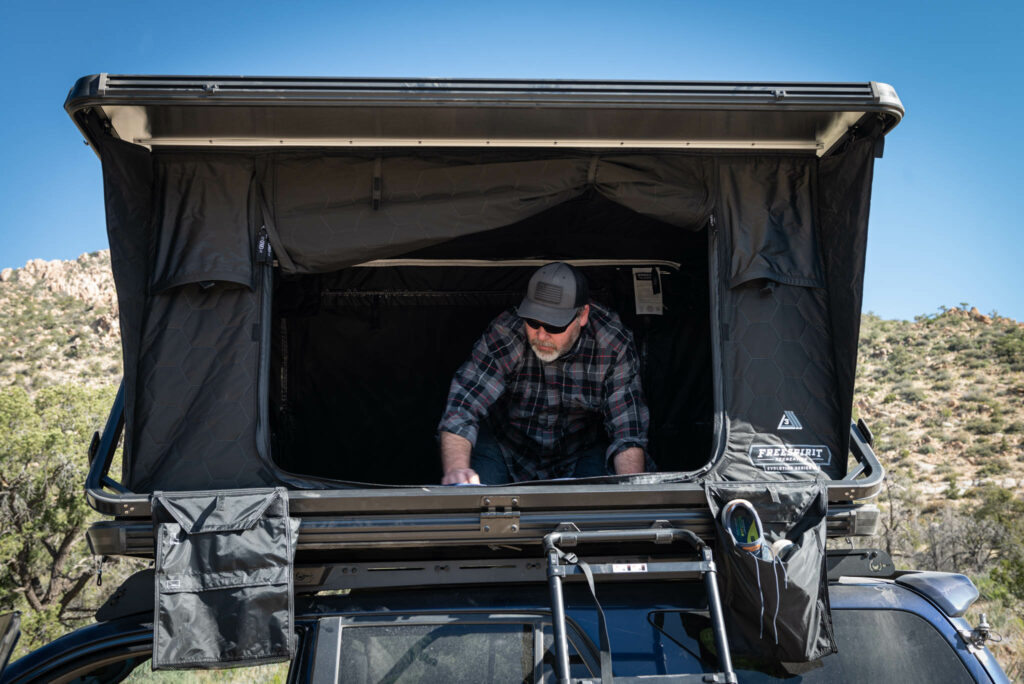
As the years have passed, the number of RTTs available on the market has exploded, with no shortage of choices of hard shell, soft shell, and now hybrid tents. Perhaps it was that first exposure to the world of rooftop tents, but I’ve always had an affinity for hard shells. Of the many, many options available, one particular brand making them has caught my attention over the past several years: Freespirit Recreation.
In particular, I have been looking at the brand’s Evolution tent. What first caught my eye was that it echoed a lot of the qualities of that early Maggiolina tent — a durable, very low-profile hardshell with a vertical deployment. While the Evolution shares the same archetype, it reflects nearly two decades of well, evolution, of this type of tent, with considerable improvements throughout the form. Earlier this year they release an updated version of the tent, the Evolution V2, which saw some notable advancements in the design. It is this updated design that I had the opportunity to test for the last two months, putting it through its paces on our exploration of the East Mojave Heritage Trail and several short weekend excursions.
READ MORE: Editors’ Choice: Best Overlanding Tents
The new V2 comes in two sizes, a short and a long version. The short version is intended for smaller SUVs, short-bed pickups and for the growing popularity of crossovers in the space. I opted for the long model, which adds an additional seven inches of interior space front to back. While it covers the whole of the roof of my 4Runner, at six feet tall, the 83 inches of interior length give me more than enough space to stretch out and still have space for my bag down by my feet when sleeping two-up in the tent.
When opening up the tent for the first time, you get a sense of why this particular RTT has been called the “Cadillac of rooftop tents.” Whether that name came about organically or its a result of clever marketing, you immediately see what is meant. Everything seems to be just a little bit extra. The finishes are nicer than what you usually see, the hardware is a bit more beefy, the zippers are a bit larger than you’d expect, and so on. The impression is “this is a premium product” and the designers put a lot of thought not only to the design as a whole, but to those little details.
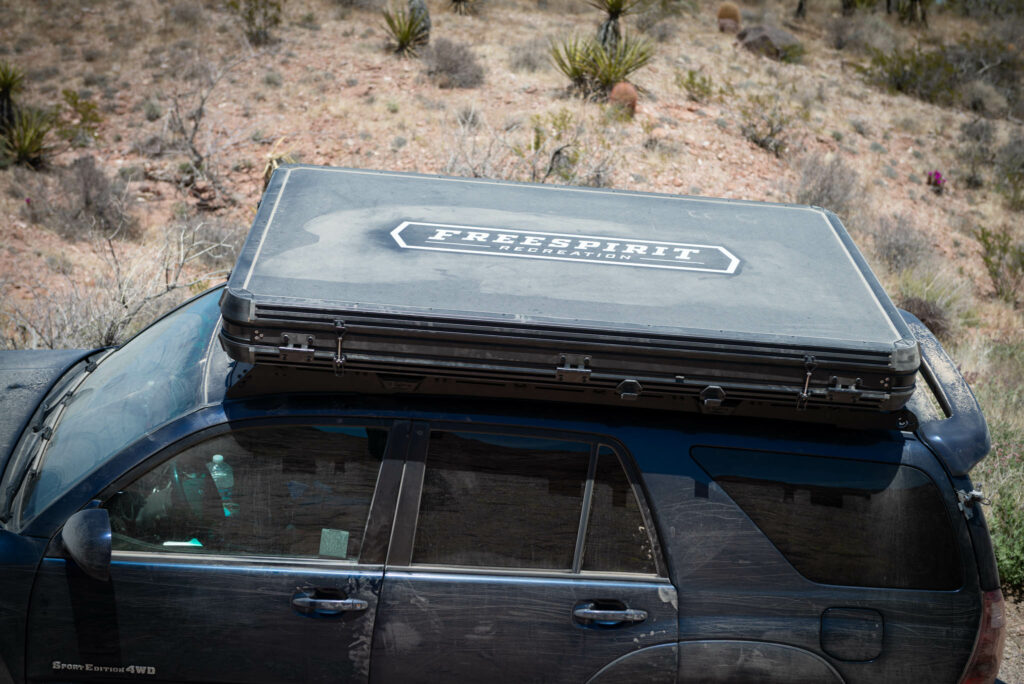
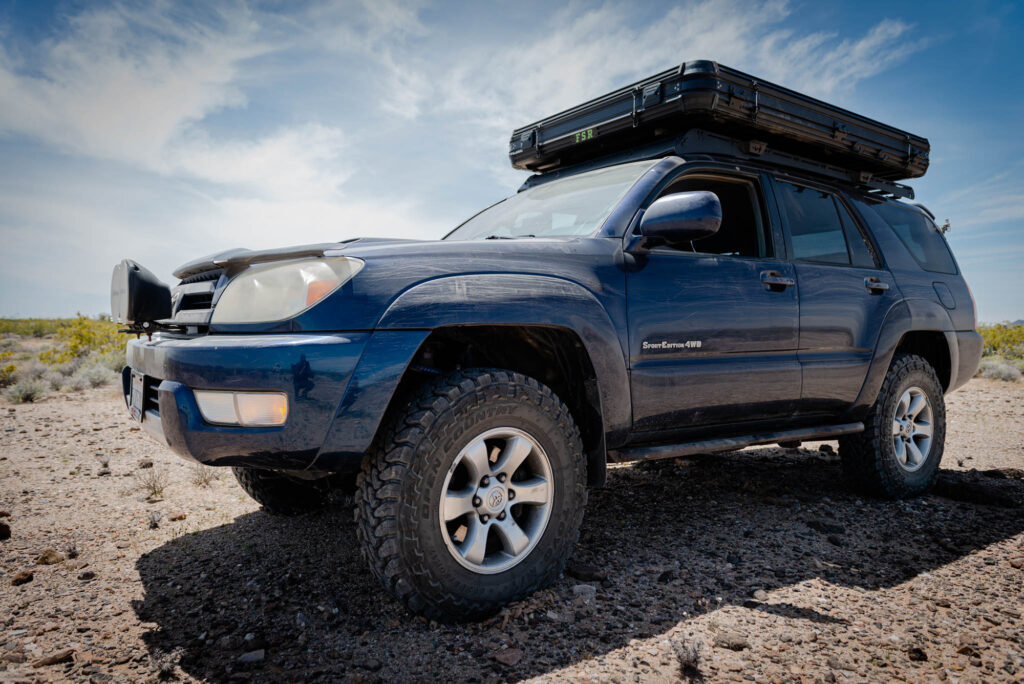
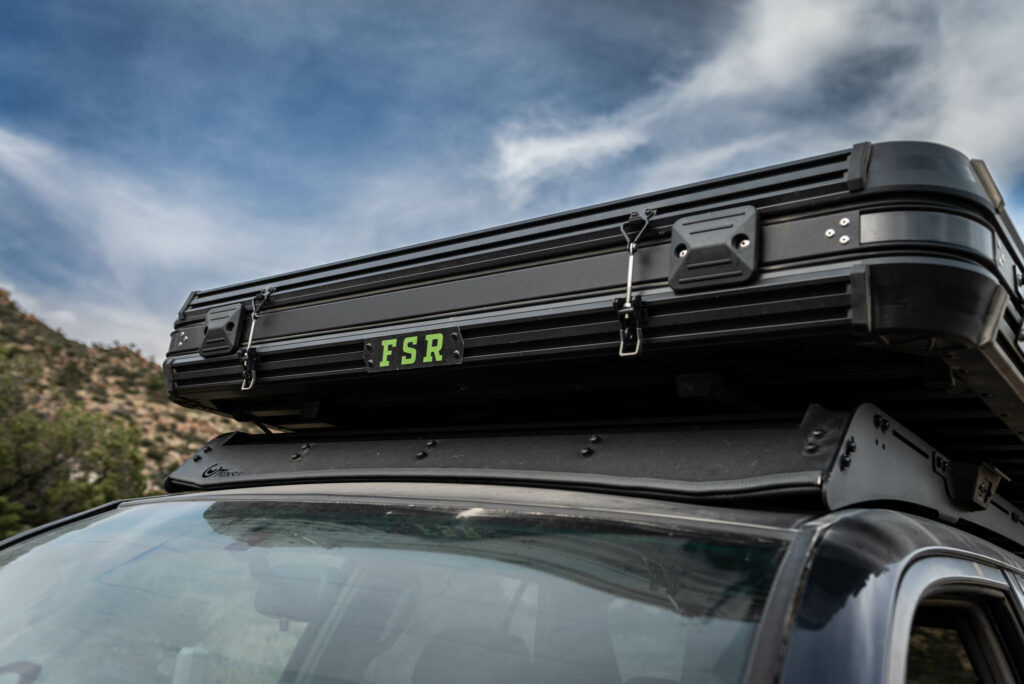
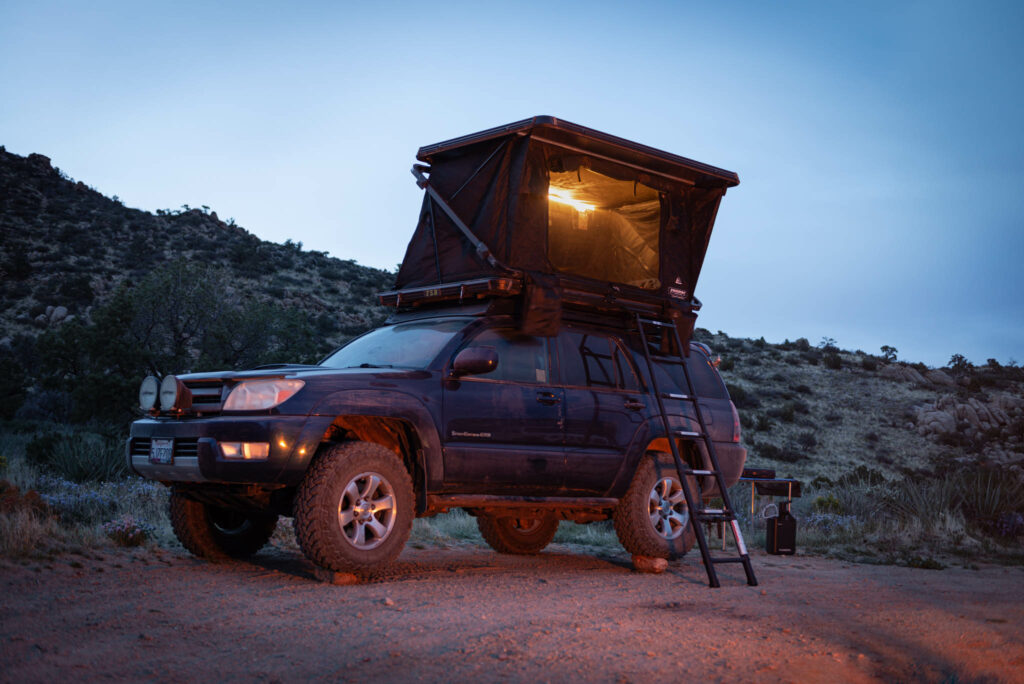


Installation
The installation of the tent was an unexpected mix of simplicity and misery. The FSR side of the equation was stunningly simple. The RTT comes with eight massive t-bolts in guide plates that slide easily into the two aluminum extrusions that run front to back under the tent. The bolts, placed in pairs toward each of the four corners of the tent, easily slide along their channels, making aligning them to the included brackets or your chosen aftermarket tent feet really easy.
The marriage of tent and roof rack was where things were a little less blissful. I mounted the tent to my Prinsu roof rack with CBI’s 1.5-inch tall roof feet. The solid vertical element that runs the length of the roof rack and forms its main structure means that there is only a little more than 2.0 inches of clearance between the underside of the tent and the side of the rack. Lest you have particularly slender forearms, you have to painfully cram at least one of your arms into this small opening and attempt to thread the nut, washer, and locking washer onto the bolt without the ability to rotate your wrist in its metal prison. All said and done, it probably took me about 15 minutes per bolt to get them fastened. All said and done the end result was worth it, the low profile installation looks great and functions well, there just may have been some creative vocabulary used along the way.
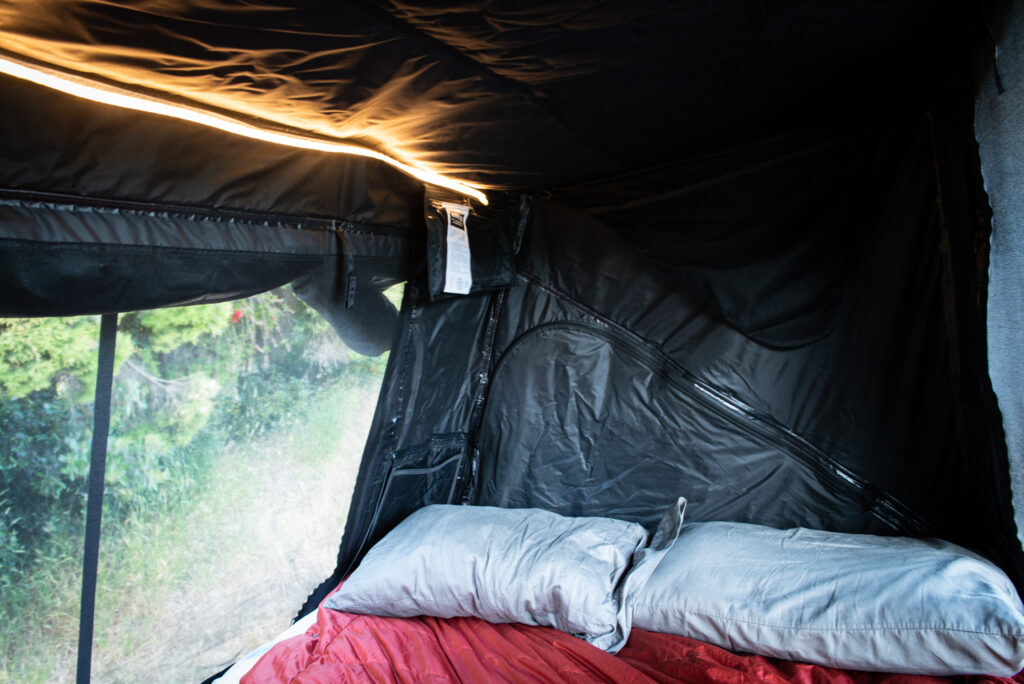



The Exterior: Solid, Premium Materials
In many ways, the tent fabric is the star of the show. FSR uses three layers of matte black 50D Poly-Oxford ripstop material with M2 poly-fil insulation between those three layers. The material is quilted together with a distinctive hexagonal stitching pattern that really catches the eye and speaks to some of the design flourishes the team has put into the updated tent design. Functionally, the insulation works very well without bulking up the tent, and it’s the only true four-season RTT I’m aware of.
The coldest night I’ve spent thus far only dipped into the low 30s, far from a true test of that fourth season. That said, I spent a very comfortable night in shorts, a t-shirt , and a summer bag as the temperatures approached freezing outside the tent. The quilted, insulated tent walls were clearly doing their job. I look forward to testing the boundaries of the tent’s insulation in true winter weather later this year.
Beyond the hexagonal tent fabric, the most notable exterior design element is the offset roof panel. Rather than expanding straight up, the open profile takes on a trapezoidal shape which creates a short overhang above the tent entrance. While subtle, the overhang creates some additional protection from the elements and helps keep rain out of the tent when coming in and out.
The frames surrounding the upper and lower sides of the hardshell are a thick, extruded aluminum channel to which the included tent ladder connects. The kit includes two sets of small mounting plates that can be slid into the channels to mount additional small accessories. I plan on installing a set of amber chase lights to the tent in the coming months. While I couldn’t find any information on the construction of the roof of the tent — the hardshell component, its textured material has thus far been very durable and hasn’t shown the least sign of damage from being dragged through a number of low tree branches I’ve encountered on the trail.
READ MORE: Trips & Trails: Mojave Road
The scissor frame that supports the tent in its open configuration is impressively rigid. Though it gets lost in the shuffle to the sexier exterior elements, it’s in some ways the most important piece of the design and certainly where any design shortcomings are bound to come to light. We had one particularly windy night on the trail that saw the vehicle swaying back and forth several inches for most of the night. The wind force was enough that I started to wonder if the tent was going to get bent or tweaked out of alignment. To its credit, the frame proved to be utterly inflexible and showed no signs of strain.
The Interior: A Good Night’s Sleep Again
When I was a kid, we’d go camping and set our thick Coleman sleeping bags directly on the floor of our tent without a thought of a sleeping pad and I’d sleep like a baby. As the combination of getting older and accumulating various injuries from both sports and youthful stupidity have caught up with me, I’ve found it increasingly difficult to sleep well at camp. It’s a rare night in a ground tent that I don’t wake up several times uncomfortable or with something aching.
FSR’s Aircore mattress has been a godsend for me in that regard. I cannot overstate how good it feels to be sleeping well on an overlanding trip again. The V2’s mattress occupies the entire interior footprint of the tent and consists of a padded, insulated outer layer over an inflatable core. The three-inch thick assembly sits on top of an insulated tent floor that, in combination does an excellent job of insulating the sleeper. The combination of the padding, the thickness of the inflatable core, and the adjustability of the inflation pressure have gotten me about as close to the comfort of my mattress at home as I’m likely to get. If you get the chance to see one of these in person – try the mattress!
With the tent walls being both black and of a triple layer construction, the interior of the tent is pitch black when the walls are fully zipped. While it is unlikely I’ll be developing any negatives out on the road, I’ve appreciated the ability to shut out all light on a particularly bright moonlit night or to block out the early morning rays when I trying to get that extra hour of sleep. To combat the utter darkness option, FSR has a dimmable LED strip that runs the full length of the tent on one side. The light runs off a USB battery pack that tucks into a mesh pocket adjacent to the stip. The light works well at illuminating the space, though I’d love to see an option to add a second strip on the opposite side for those of us that have a habit of accumulating too many black-colored items that can sometimes get lost inside of the black-on-black interior.
READ MORE: Editors’ Choice: Best Overlanding Jacks
Of course, another solution is opening up the tent walls. The tent has two large openings on the long sides of the tent and two pretty good-sized triangular openings on the short sides of the enclosure. When they are all open, the tent offers a very open, 360-degree view of your surroundings. Along with a vent that opens up a section of the fabric ceiling that sits a couple of inches below the exterior hardshell, there is a ton of flexibility in dialing in the degree and direction of ventilation the tent, something I’ve appreciated on windy, hot nights.
All in there are eight storage pockets spread across the interior in addition to the two boot bags that hang over the exterior. Two of the larger mesh pockets are perfectly sized for clothing storage, and the balance of the pockets provides more than enough storage options for my keys, wallet, Kindle, and other assorted sundries I find myself bringing into the tent with me. The lower side pockets are also large enough for my ever-present large-mouth Hydroflask, though I’d love to see a dedicated wattle bottle pocket with an elastic opening in a future version of the tent.
Takeaways
Overall, the FSR Evolution V2 it that has earned its place in the upper echelon of hardshell RTT options. Its thoughtful design, high-quality construction, and four-season performance make it stand out in a time when overlanders have such a wide variety of options in the market. It is not an inexpensive option, but the design, level of comfort, and quality of construction match the pricing. For me, it has made a huge difference in the enjoyment of off-road and overlanding trips, and I find myself simply wanting to get out more, which is a major value in and of itself.
What to know:
V2 Long Specifications
- Dimensions (open): 47”h X 60”w X 88”l
- Dimensions (closed): 9.75”h X 60”w X 88”l
- Interior Height: 39”
- Interior Dimensions: 54”w X 83”l
- Front and Back Door Dimensions: 49”w X 38”h
- Mattress Size (inflated): 3”h X 52”w X 79”l
- Weight: 184 lbs.
- Weight Capacity: 750 lbs.
- Tent Fabric: 3 Layers of 150D Poly-Oxford with 90g/M2 Poly-fil
- Colors: Black with black hardware
- MSRP: $4,095.00
V2 Short Specifications
- Dimensions (open): 47”h X 60”w X 79”l
- Dimensions (closed): 9.75”h X 60”w X 79”l
- Interior Height: 39”
- Interior Dimensions: 54”w X 74”l
- Front and Back Door Dimensions: 41”w X 38”h
- Mattress Size (inflated): 3”h X 52”w X 73”l
- Weight: 164 lbs.
- Weight Capacity: 750 lbs.
- Tent Fabric: 3 Layers of 150D Poly-Oxford with 90g/M2 Poly-fil
- Colors: Black with black hardware
- MSRP: $3,895.00
